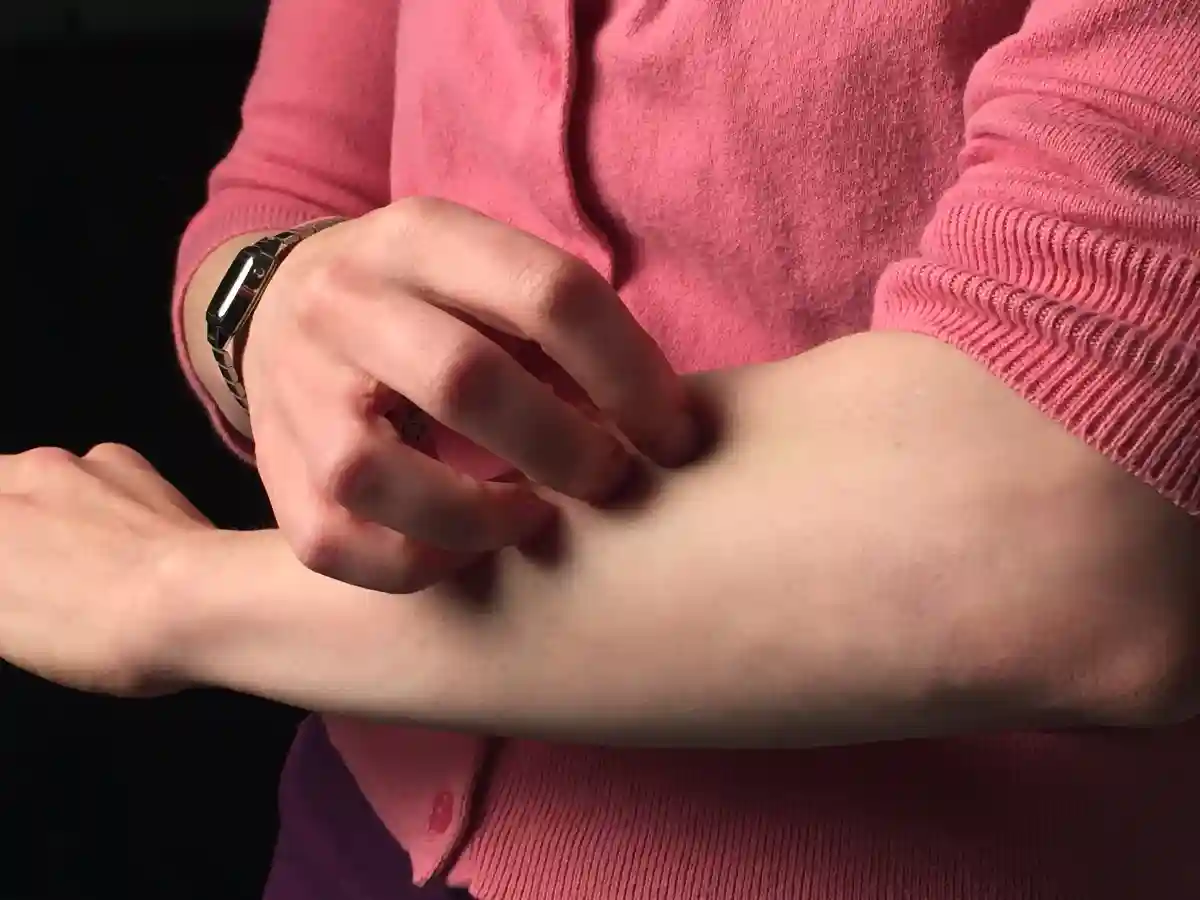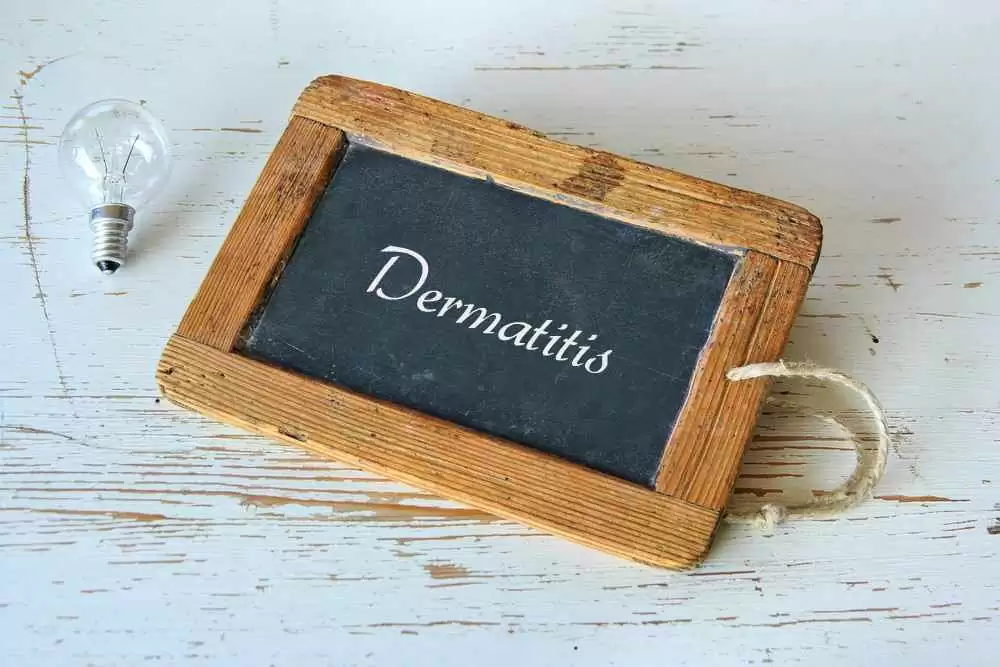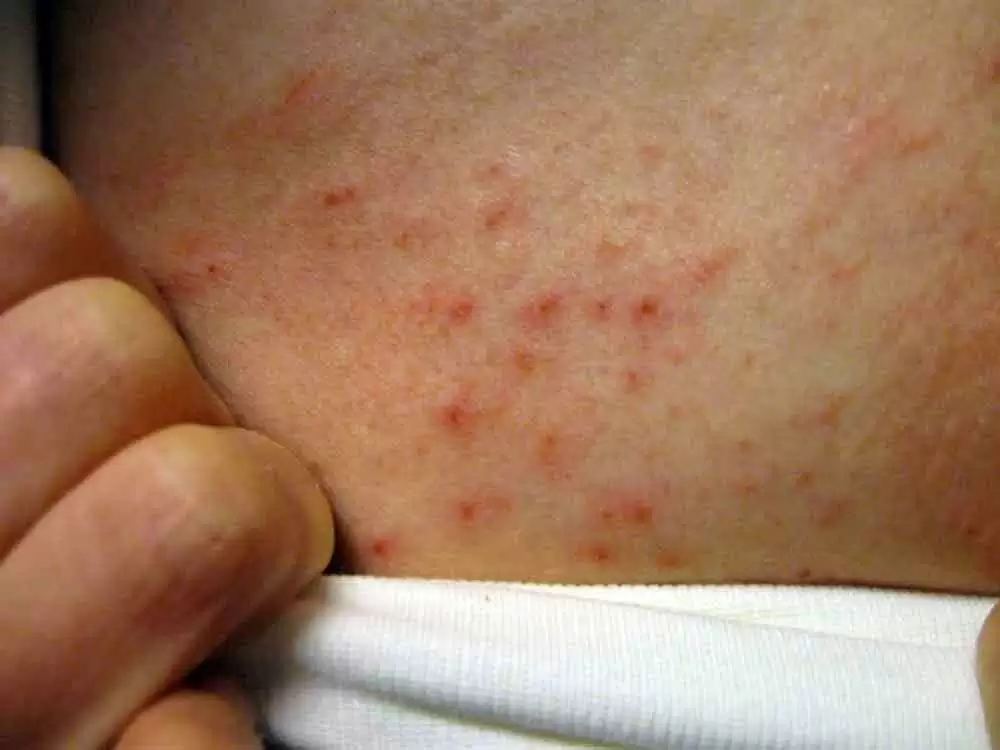Celiac.com 10/21/2023 - Celiac disease, an autoimmune disorder triggered by gluten consumption, has long been associated with a range of digestive symptoms. However, the story doesn't end in the digestive tract. For some individuals, celiac disease unveils itself through an unexpected medium: their skin. This presentation is known as dermatitis herpetiformis, and it's a vital but often overlooked facet of celiac disease.
Dermatitis herpetiformis, affectionately referred to as "DH" by some, is a chronic skin condition characterized by intensely itchy, blistering rashes. It might sound like a mere irritation, but DH is, in fact, the skin's way of echoing an underlying immune response to gluten ingestion. Just as celiac disease affects the small intestine, DH is its external manifestation, giving voice to the body's immunological revolt.
Celiac.com Sponsor (A12):
In our in-depth exploration of dermatitis herpetiformis, we delve into the intricacies of this unique condition. We'll unravel its connection to celiac disease, exploring why it appears and how it's diagnosed. We'll discuss the unmistakable and sometimes bewildering symptoms, along with the challenges of managing this skin condition. Moreover, we'll guide you through treatment options and offer practical advice for living a gluten-free life to keep DH at bay.
Despite its undeniable role in the larger celiac disease narrative, dermatitis herpetiformis remains an enigma for many. It's time to shed light on this aspect of celiac disease that affects the skin and, in doing so, empower those who face this condition to navigate its complexities with confidence and knowledge. So, let's embark on this enlightening journey, demystifying the link between celiac disease and the unexpected language of the skin: dermatitis herpetiformis.
Unraveling the Connection Between Dermatitis Herpetiformis and Celiac Disease
For those who have encountered dermatitis herpetiformis, the initial onset can be perplexing. Unexplained rashes and relentless itching lead many on a quest to uncover the root cause of their skin woes. This is where the intricate connection between dermatitis herpetiformis and celiac disease comes into play.
Celiac disease is a well-known autoimmune disorder, triggered by the consumption of gluten—a protein found in wheat, barley, and rye. When someone with celiac disease ingests gluten, it initiates an immune response in the small intestine. This response damages the intestinal lining, impeding the absorption of nutrients and leading to a host of gastrointestinal symptoms.
So, what's the connection between celiac disease's internal battleground and the itchy rashes of dermatitis herpetiformis? The answer lies in the immune system's memory.
Individuals with celiac disease have a particular genetic predisposition. When they consume gluten, their immune system recognizes it as an invader and produces antibodies, mainly tissue transglutaminase 2 (tTG-2). These antibodies don't limit their activity to the digestive tract; they circulate throughout the body.
Here's where dermatitis herpetiformis makes its grand entrance. The same antibodies that target the small intestine are drawn to the skin. When they reach the skin's surface, they provoke an inflammatory response. This reaction results in the characteristic blistering and intense itching of DH. In essence, DH is the skin's way of expressing the body's rejection of gluten—manifesting on the exterior what celiac disease inflicts internally.
But this dual-action response, where gluten triggers a reaction in both the intestines and the skin, also means that those with dermatitis herpetiformis often have underlying celiac disease. While not all celiacs experience DH, a substantial number do. As a result, diagnosing DH often leads to a celiac disease diagnosis, making it crucial to recognize the symptoms and understand the connection between these two conditions.
The Symptoms of Dermatitis Herpetiformis
Dermatitis herpetiformis is a skin condition known for its distinct and uncomfortable symptoms. Understanding these symptoms is crucial for timely diagnosis and management. Here, we delve into the key indicators of DH and how they affect those who experience this unique skin disorder.
- Intensely Itchy Skin: The hallmark symptom of DH is intense itching. Affected individuals often describe the itch as deep and unrelenting. This itchiness typically precedes the appearance of the rash and can be so severe that it significantly impacts a person's quality of life. Scratching the itchy areas can further exacerbate the condition.
- Blistering Rash: The most recognizable feature of DH is the appearance of a blistering rash. The rash typically consists of red, raised bumps or blisters filled with clear fluid. These eruptions often cluster together and create symmetrical patterns on the skin, appearing on both sides of the body. The rash's appearance can vary from person to person but is characterized by its tendency to group in clusters.
- Elbows, Knees, and Buttocks: DH often affects specific areas of the body, with a predilection for the extensor surfaces. This means that it frequently appears on the elbows, knees, and buttocks. However, the rash can also emerge on other body parts, including the scalp, back, and shoulders.
- Burning Sensation: In addition to itching, some individuals report a burning sensation or discomfort in the affected areas. This burning sensation can add to the overall discomfort and distress associated with the condition.
- Skin Lesions and Scarring: If left untreated, DH can lead to skin lesions, erosions, and secondary bacterial infections. Prolonged scratching or friction can result in scarring, which, in severe cases, may be permanent.
- Recurrence and Chronic Nature: DH tends to be a chronic condition with a relapsing-remitting pattern. Symptoms may improve and reappear over time, making it essential for individuals to have a long-term management plan.
Understanding the symptoms of dermatitis herpetiformis is vital for early recognition and proper management. It is essential for affected individuals to seek medical attention for a definitive diagnosis and to initiate appropriate treatment, often in conjunction with managing the underlying condition, celiac disease.
How To Diagnose Dermatitis Herpetiformis
Diagnosing dermatitis herpetiformis can be challenging due to its resemblance to other skin conditions. However, a correct and timely diagnosis is crucial as it often points to an underlying condition, celiac disease. Here, we'll explore the key steps involved in diagnosing DH.
- Clinical Assessment: The diagnostic journey typically begins with a visit to a dermatologist. DH's hallmark symptom is its distinct blistering rash, but it can resemble other dermatological conditions like eczema, contact dermatitis, or even herpes. An experienced dermatologist will conduct a thorough clinical assessment, taking into account the specific characteristics of the rash, its distribution, and the accompanying symptoms such as itching and burning. The presence of the rash's unique pattern, which typically forms in clusters and symmetrical groups, can be a telling sign.
- Skin Biopsy: In many cases, a definitive diagnosis of DH requires a skin biopsy. A small sample of the affected skin is taken and examined under a microscope. The biopsy typically reveals specific markers such as granular immunoglobulin A (IgA) deposits in the skin layers, a key indicator of DH. These IgA deposits, also found in the small intestine of those with celiac disease, provide a crucial link between DH and the underlying autoimmune condition.
- Blood Tests: Alongside a skin biopsy, blood tests can be conducted to detect elevated levels of antibodies associated with celiac disease, particularly IgA-tissue transglutaminase (tTG) and IgA-endomysial antibodies (EMA). Finding high levels of these antibodies in the bloodstream adds another layer of evidence linking DH to celiac disease.
- Response to a Gluten-Free Diet: Perhaps the most compelling diagnostic tool for DH is the patient's response to a gluten-free diet. If the rash and other symptoms improve or disappear with the elimination of gluten from the diet, it strongly suggests dermatitis herpetiformis in the context of celiac disease.
The diagnosis of DH can be complex, requiring a combination of clinical expertise, laboratory tests, and a dietary evaluation. Once confirmed, patients can begin effective management of both the skin condition and their underlying celiac disease, often with significant improvements in their overall health and well-being. In the following section, we'll explore strategies for managing dermatitis herpetiformis.
Home and Over the Counter Remedies for Symptoms of Dermatitis Herpetiformis
While home remedies can provide some relief from itching, it's important to note that DH typically requires medical treatment, including a gluten-free diet. Be sure to consult a healthcare professional for proper diagnosis and treatment. Here are some home remedies that may help alleviate itching associated with dermatitis herpetiformis:
- Gluten-Free Diet: While not a prescription medication, adherence to a strict gluten-free diet is the cornerstone of DH treatment. Eliminating gluten from the diet can prevent the formation of new skin lesions and reduce the need for medications over time.
- Benadryl (consult a doctor before use in young children): First try the over the counter cream, but if that does work a member of Celiac.com's forum reports that the very best thing to stop DH itching is to grind up a 25mg pill of Benadryl (or perhaps get capsules and just open one) into two teaspoons of water, and then spread it over the rash and itchy areas with your finger. Just be careful not to use too much too often, as you can absorb the drug through the skin.
- Allegra (Fexofenadine): Those with DH report that taking Allegra, which, in the USA, is an over the counter allergy medication, provides relief. Be sure to read all package warnings before giving it to children.
- Kroger's Full Prescription Strength Athletes Foot Cream: Users have reported that this helped stop their itching.
- Panaten Baby Cream: This is a German cream made for diaper itch which has worked well for some with DH.
- Cold Compress: Apply a cold, damp cloth or an ice pack to the affected area. This can help reduce inflammation and numb the itching sensation temporarily.
- Gluten-Free Oatmeal Bath: Adding colloidal oatmeal (available in drugstores) to your bathwater can soothe irritated skin. Soak in the oatmeal bath for 15-20 minutes and be sure the oatmeal is certified gluten-free.
- Baking Soda Bath: A baking soda bath may help relieve itching. Add a cup of baking soda to a lukewarm bath and soak in it for relief.
- Aloe Vera: Apply aloe vera gel directly to the affected area. Aloe vera has anti-inflammatory properties and can provide soothing relief.
- Calamine Lotion: Calamine lotion can help relieve itching and soothe the skin. Apply a thin layer to the affected area and allow it to dry.
- Topical Hydrocortisone Cream: Over-the-counter hydrocortisone creams can provide temporary relief from itching and inflammation. Follow the instructions on the product label.
- Keep Skin Moisturized: Apply a fragrance-free, hypoallergenic moisturizer to your skin regularly. Dry skin can worsen itching.
- Ben-Gay Cream: Some people with DH have reported that using Ben-Gay cream on the affected areas relieved the itchiness.
- Chiggerex cream: Some people with DH have reported that using Chiggerex cream on the affected areas relieved the itchiness.
- Avoid Irritants: Avoid foods high in iodine like seafoods and dairy products as iodine may exacerbate symptoms in some people with DH. Also avoid harsh soaps, fragranced products, and hot water, as they can exacerbate itching. Opt for gentle, hypoallergenic products.
- Wear Loose-Fitting Clothing: Tight clothing can irritate the skin. Choose loose-fitting, breathable fabrics to minimize friction.
- Antihistamines: Over-the-counter antihistamines may help reduce itching. Consult your doctor or pharmacist for the appropriate dosage and type.
- Niacin and Niacinamide (Vitamin B3): There is some evidence that niacin and niacinamide may offer some relief from DH symptoms.
- Stress Reduction: Stress can exacerbate itching. Engage in relaxation techniques such as deep breathing, meditation, or yoga to manage stress.
- Dietary Modifications: While not a home remedy, it's crucial to address the root cause of DH by following a strict gluten-free diet. Consult with a registered dietitian to ensure you are avoiding gluten-containing foods.
Remember that these home remedies are not a substitute for medical treatment. If you suspect you have dermatitis herpetiformis or are experiencing severe itching, consult a dermatologist or healthcare provider for proper diagnosis and guidance on managing the condition, which typically includes a gluten-free diet and medication to control symptoms.
Prescription Treatments for Symptoms of Dermatitis Herpetiformis
Dermatitis herpetiformis is typically treated with prescription medications aimed at controlling the symptoms and underlying condition, which is celiac disease. The primary treatment for DH is a strict gluten-free diet, as DH is closely associated with gluten intolerance. Additionally, medications are often prescribed to manage the skin symptoms. Common prescription treatments for DH include:
- Dapsone: Dapsone is the most commonly prescribed medication for DH. It is an oral medication that belongs to the sulfone class of drugs. Dapsone helps reduce skin inflammation, itching, and the formation of new blisters. It is usually started at a low dose and gradually increased as needed. Regular blood tests are necessary to monitor potential side effects, such as changes in blood cell counts.
- Topical Steroids: In addition to oral medications, topical corticosteroid creams or ointments may be prescribed to reduce itching and inflammation. These are applied directly to the affected skin and should be used as directed by a healthcare provider.
- Oral Corticosteroids: In cases of severe flare-ups or when Dapsone is not well-tolerated, oral corticosteroids like prednisone may be prescribed for short periods to quickly control symptoms. Long-term use of oral corticosteroids is generally avoided due to potential side effects.
- Sulfapyridine: Sulfapyridine is sometimes used as an alternative to Dapsone. It is also an oral medication that can help control DH symptoms. Like Dapsone, regular blood tests are necessary to monitor for side effects.
- Immunosuppressants: In some cases, immunosuppressive medications such as azathioprine or methotrexate may be prescribed to control DH symptoms. These medications work by suppressing the immune system's response that leads to skin inflammation. They are typically considered when other treatments are ineffective or not well-tolerated.
It's crucial to work closely with a healthcare provider, preferably a dermatologist and a gastroenterologist, if you have dermatitis herpetiformis. They can properly diagnose the condition, monitor your progress, and adjust your treatment plan as needed. Additionally, regular follow-up appointments are important to assess the effectiveness of treatment and manage any potential side effects of medications. Remember that self-diagnosis and self-treatment are not recommended for DH, and medical guidance is essential for effective management.










Recommended Comments
Create an account or sign in to comment
You need to be a member in order to leave a comment
Create an account
Sign up for a new account in our community. It's easy!
Register a new accountSign in
Already have an account? Sign in here.
Sign In Now